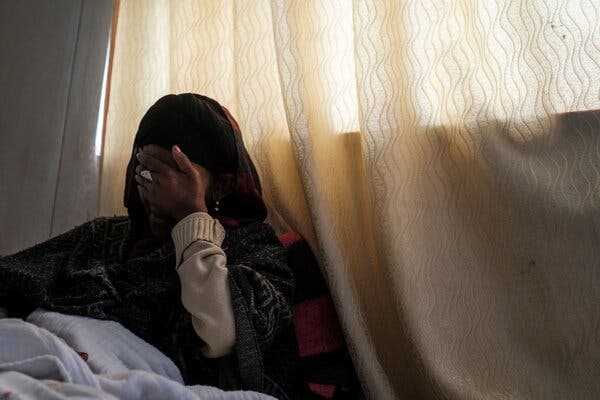By GEDAM AFEWORK
Ethiopia is grappling with a growing internal displacement crisis, fueled by ongoing conflicts.
The UN agencies-the International Organization for Migration, the United Nations Development Programme, and the United Nations High Commissioner for Refugees-have issued a warning about the growing crisis.
This displacement crisis underlines an increasingly integrated, development-focused approach to meet immediate humanitarian needs and achieve longer-term recovery.
Last week in Addis Ababa, the chiefs of those UN agencies launched a new national strategy to address the root causes of displacement, reinforce government-led peacebuilding and development efforts, and improve resilience among the communities affected.
The strategy puts its emphasis on an integrated response that combines humanitarian aid with efforts to restore livelihoods, job creation, and durable peace.
The COVID-19 pandemic, armed conflicts, droughts, and floods have all piled on to heap challenge upon challenge for the country, resulting in widespread displacement and a severe strain on essential services.
The country has suffered significant setbacks due to a series of overlapping crises.
Over the past years, millions of Ethiopians have been made to flee their homes, without access to basic services and livelihoods.
Shoko Noda, Director of the UNDP Crisis Bureau, underlined the complexity of the crisis:
“The plight of internally displaced people in Ethiopia is not solely a humanitarian issue; it requires comprehensive recovery and development solutions.
Many of those displaced urgently need access to basic social services, protection, decent work, and livelihood opportunities.
We’ll be further scaling up our recovery efforts for resilience building.”
The effects of this displacement go beyond the individual victims and increase burdens in host communities.
These areas are struggling to accommodate growing populations, resulting in overcrowding, strained infrastructure, and heightened poverty.
This has exacerbated the vulnerabilities of both displaced persons and local residents, creating a cycle of poverty that is difficult to break.
Meanwhile, international financial support to Ethiopia continues to shrink.
According to UNDP, ODA has declined from $4.7 billion in 2020 to $2.7 billion in 2022, weakening the country’s ability to respond accordingly to the needs at hand.
While humanitarian aid remains critical, UN agencies believe the government-driven development processes must capture center stage regarding the long-term challenges brought along by internal displacement.
The Government of Ethiopia, with the support of the UN, is thus addressing the immediate needs of displaced people with concomitant attention to strengthen governance, invest in social services, and build economic opportunities.
Even though conflicts are still continuing in the Amhara and Oromia regions, Legese Tulu (Dr), The communication Minister of Ethiopia said “significant gains have been recorded towards a return of peace to most parts of our country”
The situation is far from stable, with continued reports of drone attacks and arrests of civilians.
These UN agencies are urging the international community to boost support given to the efforts of Ethiopia to recover.
Raouf Mazou, UNHCR’s Assistant High Commissioner for Operations, said, “Climate action, peacebuilding, and durable solutions to displacement go hand in hand.
By supporting these initiatives, we can help Ethiopia achieve sustainable development while alleviating the suffering of millions.”
The UN’s new National Durable Solutions Strategy seeks to bridge humanitarian assistance with development and peacebuilding initiatives into one cohesive approach toward dealing with displacement.
This is part of the general global response to the increasing scale of displacement-estimated by now to have gone beyond 122 million worldwide.
Ugochi Daniels, IOM Deputy Director General for Operations, emphasized the need for collaboration between national and regional authorities for coordinated planning and effective implementation of solutions.
The endorsement of the National Durable Solutions Strategy marks a milestone in the implementation of the Action Agenda,”
Daniels said, “Ethiopia is ready to scale up cooperation with regional authorities for coordinated planning that empowers displaced communities to rebuild their lives.”
The complex challenge of internal displacement facing Ethiopia requires a multi-faceted and durable approach.
The UN’s call for a shift toward government-led, development-focused solutions offers a pathway to long-term recovery, stability, and resilience.
By combining immediate humanitarian relief with long-term development strategies, Ethiopia can address the needs of displaced persons while building a more inclusive and sustainable future for all Ethiopians.
The collaboration between the Ethiopian government, UN agencies, and international partners is critical to achieving these goals.
With the right resources and resolve, Ethiopia can reconstruct and re-open hope for millions who have been displaced, and build a more peaceful and prosperous future.



